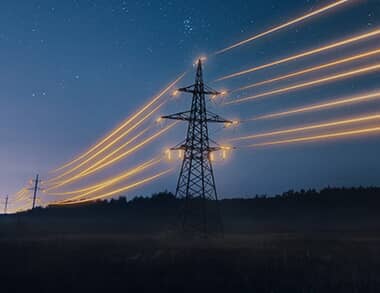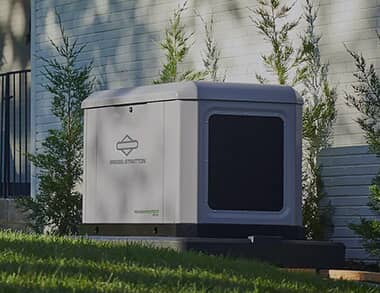Common Problems with Backup Power

Reliable construction and adherence to maintenance schedules are effective at minimizing the risk of problems with your backup power supply. However, there are no guarantees that things won't go wrong when you least expect it.
When the lights start to flicker and the backup power supply stops functioning, the following are some common culprits that you will want to investigate.
Low coolant levels will trigger an alarm and an alert via your mobile link monitoring. Similarly, alarms and alerts will be sent when the coolant temperature rises beyond acceptable levels. Anytime this problem arises, it is advisable to inspect the system for leaks to ensure that a one-time inconvenience doesn't become a persistent problem.
Belts wear out over time, and the wear and tear is heavily influenced by the environment where the generator operates. Belts exposed to harsh weather conditions can dry out and crack. Dry, cracked belts can break with little to no warning and should be replaced as soon as they are detected.
Failing to properly supply the backup power generator with fuel can occur for any number of reasons. Unexpected usage, increased production requirements, etc. can all lead to incorrectly determining how much fuel the generator requires. If the problem is due to increased capacity requirements, then the solution is as simple as ordering more fuel. However, if use remains the same and the tanks are still running dry, you will want to inspect fuel lines and tanks for signs of leakage.
Finally, if the unit has sufficient fuel but sputters or won't start, it is possible a bad batch or two has clogged the fuel lines with sludge or other debris and these will need to be thoroughly cleaned to remove the blockage and prevent damage to the engine.
Outdoor backup power generators are susceptible to damage from wind, rains, snow, and other natural events. Similarly, rodents can chew wires, insects can damage circuit boards, and birds can build a nest and move into the unit. When rodents, birds, and other pests cause damage, it's crucial to conduct the necessary repairs and take reasonable steps to prevent a recurrence.
Signs of wet stacking include thick, black fluid that oozes from the exhaust pipes, manifold, or turbocharger, You run the risk of wet stacking if you have an improperly sized generator because it results in incomplete combustion of the fuel. Failing to operate with a sufficiently large load is dangerous because the engine doesn't rise to the necessary temperatures to seal expansion joints. When this happens, diesel fuel can seep through and pool around the exhaust system. This can cause damage to components and poses a significant risk of fire.
Regularly scheduled maintenance can prevent these common problems with backup power. We invite you to contact Gen-Tech Generator and Air Power Specialists at 800-625-8324 to discuss the problems you are experiencing with your backup power systems. Our qualified technicians are available 24/7 to provide emergency support and assistance so that your systems won't stay down for long.
When the lights start to flicker and the backup power supply stops functioning, the following are some common culprits that you will want to investigate.
Coolant Problems
Low coolant levels will trigger an alarm and an alert via your mobile link monitoring. Similarly, alarms and alerts will be sent when the coolant temperature rises beyond acceptable levels. Anytime this problem arises, it is advisable to inspect the system for leaks to ensure that a one-time inconvenience doesn't become a persistent problem.
Bad Belts
Belts wear out over time, and the wear and tear is heavily influenced by the environment where the generator operates. Belts exposed to harsh weather conditions can dry out and crack. Dry, cracked belts can break with little to no warning and should be replaced as soon as they are detected.
Fuel Runs Dry
Failing to properly supply the backup power generator with fuel can occur for any number of reasons. Unexpected usage, increased production requirements, etc. can all lead to incorrectly determining how much fuel the generator requires. If the problem is due to increased capacity requirements, then the solution is as simple as ordering more fuel. However, if use remains the same and the tanks are still running dry, you will want to inspect fuel lines and tanks for signs of leakage.
Finally, if the unit has sufficient fuel but sputters or won't start, it is possible a bad batch or two has clogged the fuel lines with sludge or other debris and these will need to be thoroughly cleaned to remove the blockage and prevent damage to the engine.
Weather and Pests
Outdoor backup power generators are susceptible to damage from wind, rains, snow, and other natural events. Similarly, rodents can chew wires, insects can damage circuit boards, and birds can build a nest and move into the unit. When rodents, birds, and other pests cause damage, it's crucial to conduct the necessary repairs and take reasonable steps to prevent a recurrence.
"Wet Stacking"
Signs of wet stacking include thick, black fluid that oozes from the exhaust pipes, manifold, or turbocharger, You run the risk of wet stacking if you have an improperly sized generator because it results in incomplete combustion of the fuel. Failing to operate with a sufficiently large load is dangerous because the engine doesn't rise to the necessary temperatures to seal expansion joints. When this happens, diesel fuel can seep through and pool around the exhaust system. This can cause damage to components and poses a significant risk of fire.
Regularly scheduled maintenance can prevent these common problems with backup power. We invite you to contact Gen-Tech Generator and Air Power Specialists at 800-625-8324 to discuss the problems you are experiencing with your backup power systems. Our qualified technicians are available 24/7 to provide emergency support and assistance so that your systems won't stay down for long.
Topics:
From Insights to Power: Let’s Talk Solutions
Whether you need emergency power, maintenance, or expert guidance on your generator system, Gen-Tech has you covered. Our experienced team provides industry-leading service to keep your power running when it matters most. Call (800) 625-8324 to discuss your power generation needs today!
Contact Us













